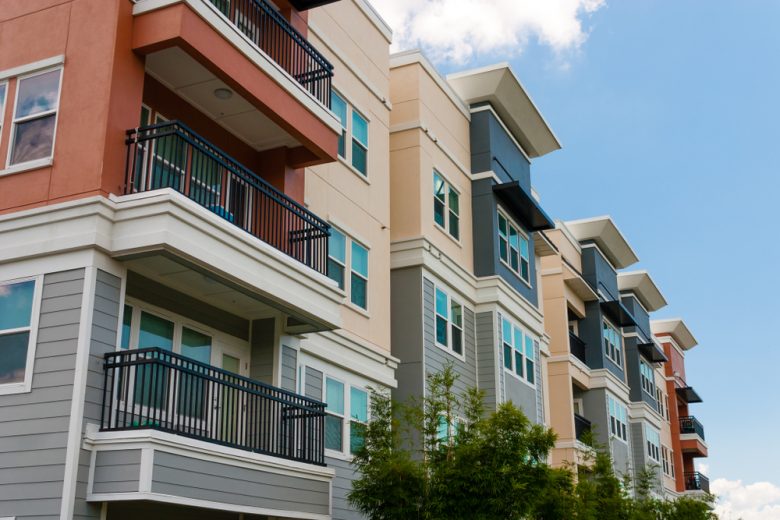By Gerry Neely
B.A., LL.B.
Noise, vibrations, odors, overhanging trees and underground roots, pollution of air or water, obstruction of highways or navigable waters or access, flooding and depriving land of support: this is not a complete list of conduct by your neighbor which may do harm to your property or to you. If your neighbor's conduct damages your property or interferes with your use and enjoyment of it and that interference is unreasonable, then that conduct may be a nuisance in law which gives you the right to damages. However, that is a right you may lose if you don't issue the Writ in time.
In June of 1985, a couple took title to a home which they had inspected from time to time over the preceding year when it was unoccupied. Some of these visits coincided with the commencement of construction of a church on the adjoining property.
That property was preloaded with approximately eight to ten feet of fill and piles were driven for foundation work which commenced in late 1984. In March of 1985, the couple discovered that the fireplace chimney was separating from the house on the side closest to the church property. In August, they noticed large cracks in the foundation slab and a living room which now sloped toward the church.
The church declined to accept responsibility and the Writ was issued June 5, 1987. At the trial, the judge accepted the plaintiff's expert evidence that the cause of the settlement on the couple's property was the weight of the preload on the church property.
The church did what it was lawfully entitled to do on its own property. The question, however, was whether its conduct was reasonable having regard to the neighbor's right to the support of the land in its natural state. The church's consultants were aware of the settlement sensitivity of the soil. Adding the additional weight of fill was an unreasonable interference with the couple's use and enjoyment of their land, entitling them to damages, unless there were other defenses.
One defense raised to their action for damages to the chimney was that they were not owners when the damage occurred. That defense was unsuccessful because an owner can recover a loss resulting from a nuisance which began before the owner purchased the property and continues after the purchase. The real obstacle to their claim was the two year limitation period in the Limitation Act for the commencement of an action for damages in respect of an injury to property.
The Limitation Act expects a reasonable man, having taken into account his own circumstances, to commence an action when, with knowledge of the extent of the injury and the cost of repairs, he has received advice which leads him to conclude that an action has a reasonable chance of success. In this case, the judge decided that the couple could have reached this decision early in March of 1985. Since the Writ was not issued until more than two years later, the claim for the chimney damage was dismissed. The claim for the foundation damage which occurred in August was allowed.
It is relatively easy for the Courts to find that a nuisance has occurred where there is actual physical damage to property. It is more difficult when the interference complained of is based on subjective responses to conduct relating to noise or odors.
So far, cases illustrate that there must be a substantial and unreasonable annoyance and discomfort before the Courts will limit your neighbor's own use and enjoyment of his property. So, apart from municipal bylaws, it looks as if we may have to put up with the backyard barbecue and the loud stereo on a warm summer's evening.1
| 1. |
|
To subscribe to receive BCREA publications such as this one, or to update your email address or current subscriptions, click here.
Without limiting the Terms of Use applicable to your use of BCREA's website and the information contained thereon, the information contained in BCREA’s Legally Speaking publications is prepared by external third-party contributors and provided for general informational purposes only. The information in BCREA’s Legally Speaking publications should not be considered legal advice, and BCREA does not intend for it to amount to advice on which you should rely. You should not, in any circumstances, rely on the legal information without first consulting with your lawyer about its accuracy and applicability. BCREA makes no representation about and has no responsibility to you or any other person for the accuracy, reliability or timeliness of the information supplied by any external third-party contributors.
-
 Landlords Take Notice – Recent Amendments to BC Tenancy Legislation #574
Landlords Take Notice – Recent Amendments to BC Tenancy Legislation #574 -
 It’s Finally Here: The Short-Term Rental Accommodations Act #572
It’s Finally Here: The Short-Term Rental Accommodations Act #572 -
 Listing and Selling Tenanted Properties #553
Listing and Selling Tenanted Properties #553 -
 Prohibition on Rental and Age Restrictions in Strata Buildings #556
Prohibition on Rental and Age Restrictions in Strata Buildings #556











